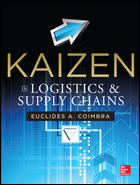
X-ray technology of this metal component helped identify noticeable voids. Source: TUV Rheinland Industrial Solutions
Despite all the planning and due diligence in the pre-launch control plan, production issues can occur. While adhering to JIT and lean manufacturing principles can lower production costs, the necessitated minimal inventory volumes can magnify the cost of faulty products entering the supply chain. Often, a product defect is not discovered until well after the part is already on trailers, in transit, on the customer’s floor or in assembled products such as vehicles. However, a lab services team can travel to the location of the product to provide on-site inspection, sorting and containment services to minimize possible production disruptions.

Sorting numerous amounts of product in a quick, clean, safe and cost effective way keeps the supply chain moving without having costly downtime or shutting down a major supplier. Source: TUV Rheinland Industrial Solutions
Real-Time Radiography
Real-time radiography is a non-destructive testing method that is capable of viewing a radiographic image in real time without the hindrance of developing film or having to deal with hazardous chemicals. It has the capability to magnify the area of interest, making the interpretation of an indication a much easier process. This process is called micro focus.When a product has been quarantined or contained, radiography is a method that can be utilized to sort the product, separating the “flawed suspect” and verifying “good” product. Real time is a more cost effective method, since multiple parts can be ran continuously without the material cost of film and chemicals.
Types of Product Sorting Utilizing Real-Time Radiography
Real-time radiography is not without limitations, but is a very efficient methodology. Some of the limitations are due to the density of products surrounding the area of interest and the permanent record is not as clear as film radiography. However, flawed products can be sorted and further examination can be performed utilizing other methods.
Regardless of the issue, sorting numerous amounts of product in a quick, clean, safe and cost effective way keeps the supply chain moving without having costly downtime or shutting down a major supplier.

Typical nondestructive radiography inspections by industry type. Source: TUV Rheinland Industrial Solutions.
Computed Radiography
Computed radiography (CR) is a technique that captures a radiographic image in storage phosphors for later readout and display. Unlike “prompt-emitting” phosphors used in conventional phosphor-intensifying screens, these storage phosphors retain the latent image, which remains stable for a period of time before it decays to a level at which image quality will be adversely affected. This period can range from minutes to days, depending on the screen phosphor material. During this time, the image can be read out with a scanning system, which, through the application of appropriate software, digitally reconstructs the radiographic image.The image is read out by scanning it with a red or near-infrared light to stimulate the phosphor, causing it to release its stored energy in the form of visible light. This phenomenon is known as photo stimulable luminescence. Like conventional intensifying screens, the intensity of this stimulated luminescence is directly proportional to the number of X-ray photons absorbed by the storage phosphor.
Why Consider Computed Radiography?
Gamma Radiography
Gamma Radiography can be used in the laboratory (shooting vault) or in the field. It is used to shoot through thick product-three inches or greater of steel or large parts that are not easily moved. This process uses gamma ray radioisotopes to test materials for flaws such as invisible cracks, defects and occlusions in the quality of welds. The advantage of gamma radiography compared to non-nuclear technologies is that it can be done thoroughly and non-invasively (one does not have to cut the material). It can be done rapidly and, in some cases, is less expensive to perform.The process is very similar to X-ray radiography in a hospital or X-ray screening of luggage at an airport. The difference is that instead of using X-rays, gamma radiography uses a source that is more penetrating, such as cobalt-60. Radioisotopes have an advantage in that they can be taken to the site when an examination is required and no electric power is available. All that is needed to produce effective gamma rays is a small pellet of radioactive material in a sealed titanium capsule. The capsule is placed on one side of the object being screened and photographic film is placed on the other. The gamma rays, like X-rays, pass through the object and create an image on the film. Just as x-rays show a break in a bone, gamma rays show flaws in metal castings or welded joints. The technique allows critical components to be inspected for internal defects without damage and in place.
Film X-Ray Radiography
Traditional film radiography is a non-destructive failure analysis technique used to examine the interior details of an item. It operates on the principal of dissimilar transmission of X-rays through different materials. The ability of a material to block X-rays increases with its density. It is this dissimilar transmission of X-rays through different materials that is utilized to create an image of various contrasts. X-ray imaging may be accomplished on film. The interior parts of an item are exposed to radiation and the film is then developed through the chemical and drying process. The image is then viewed with a high-intensity light and compared to a reference standard.The Importance of Selecting the Right Inspection Company
When panic situations occur, a carefully selected partner in inspection can limit exposure to losses and down time.Tech Tips
Always choose an accredited agency
Make sure they use only qualified, level-II inspectors and cost-effective, highly trained personnel
Ensure they are third-party certified (report) Ask if they provide traceable documentation
Ensure they are third-party certified (report) Ask if they provide traceable documentation
